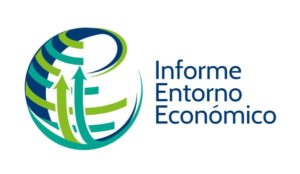Global Economic Environment


Dr. Vicente J. Pallardó
Economic Analyst and Senior Researcher at the Institute of International Economics (IEI)
Informe de Situación Económica Internacional – abril 2025
Informe de Situación Económica Internacional – enero 2025
Informe de Situación Económica Internacional – octubre 2024
Informe de Situación Económica Internacional – julio 2024
Informe de Situación Económica Internacional – abril 2024
Informe de Situación Económica Internacional – enero 2024
Informe de Situación Económica Internacional – octubre 2023
Informe de Situación Económica Internacional – julio 2023
International economic situation report – April 2023
International economic situation report – January 2023
The start of our Quarterly Reports on the international economic situation comes at a particularly complex time. The legacy of the imbalances introduced into the global economic system by the COVID-19 pandemic, an extremely adverse geopolitical situation and the ultra-expansionary (probably over-expansionary) macroeconomic policy response to the last two recessions place the international economy, and especially the West, in a series of serious difficulties. Inflation rates unprecedented in almost half a century, continued disruptions in global value chains, the need to reverse (but not too much, in intensity and temporality, to avoid a significant recession) recent monetary and fiscal policies, and the dilemma of whether (and how) globalisation should be rethought, not only for reasons of efficiency (not of costs, but of greater security of supply, at least of certain strategic goods – and raw materials) but also for geopolitical reasons.
These issues, among many others, will be addressed in these pages, in an attempt to provide the reader with data, ideas and perspectives that contribute to a better understanding of the current economic reality. To this end, our Quarterly Reports will be divided into a series of headings, which we will present in some detail in this first exercise. After the Introduction, each Report will continue with the Focus of Attention, a graph whose analysis will include some of the most important elements of the period under analysis.
We will continue with a section showing the recent variations (in general, over the last year and the last quarter) in the International Reference Prices, i.e. those prices which, to a large extent, set the pattern of behaviour of the world economy. Thus, we will show the reference interest rates set by the twenty main Central Banks, both in developed and emerging and developing economic areas. We will continue with the prices of the major commodity groups, highlighting in each report a product for which the recent evolution of its price is of particular interest. Finally, we will review the performance of the main international currencies, including those included in the International Monetary Fund’s basket of Special Drawing Rights (US dollar, euro, yen, yuan and pound sterling), together with the Australian dollar and Swiss franc, currencies that often have very different trends depending on the global economic situation.
The main focus of our Reports will be on Understanding the Quarter in Seven Keys, a section in which we will address different aspects that, in keeping with its name, are of interest to us.
The main core of our Reports will be Understanding the Quarter in Seven Keys, a section in which we will address different aspects which, in accordance with its name, are key to understanding events in the recent period and future developments in the international economy.
Finally, we will close with the section The World in Two Variables, for which, in each Report, we will select two important macroeconomic indicators, and the trajectory of these indicators since the beginning of the 21st century for the world economy as a whole. To this end, we will differentiate between developed, emerging and developing countries, summarising their evolution on the basis of the ten largest economies, according to their population and weighted by their Gross Domestic Product in Purchasing Power Parity, in each of the three blocks. As this is the first Quarterly Report, the approach followed will be set out in greater detail in the section itself.
We hope that this exercise in analysis, carried out within the framework of the Valenciaport Chair of Port Economics, will be of interest to readers and will become a reference for their monitoring of developments in the port sector.

